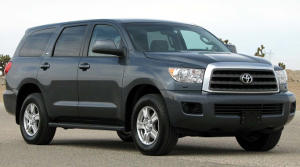Have Cars Outgrown UK Infrastructure?

A recent motor trade study conducted by Transport & Environment (T&E) revealed that new cars across Europe are widening by an average of 1cm every two years. This trend is expected to rise due to the increasing popularity of SUVs, a trend observed both in the UK and across the continent.
The data reveals that approximately half of the new cars sold off a motor trade dealers’ forecourt are already too wide for the minimum on-street parking space in many countries, including the UK.
T&E’s research indicates that the average width of new cars expanded to 180.3cm in the first half of 2023, up from 177.8cm in 2018.
Among the top 100 new cars sold in the EU in 2023, over 50% were too wide for the minimum specified on-street parking space (180 cm) across major cities like London, Birmingham, and Manchester.
Off-street parking is also becoming problematic for vehicle owners, with even average-sized new cars struggling to fit into an allocated space. Luxury SUVs now measure around 200cm wide, often no longer fitting in typical off-street parking spaces, which measure an average of about 240cm.
Comparisons with data from the International Council on Clean Transportation (ICCT) over the past two decades up to 2020 reveal a consistent widening trend by motor trade manufacturers.
T&E warns that safety issues could soon arise unless vehicle width limits are introduced or cities implement increased parking charges for larger vehicles.
The report explicitly targets large luxury SUVs as significant contributors to the on-street parking problem. Worryingly, wider designs have also increased vehicle height too. This is despite crash data indicating a 10cm increase in the height of a vehicle front poses a 30% risk increase of fatalities in collisions with pedestrians and cyclists. These types of statistics will no doubt raise eyebrows with local insurance brokers.
Sarah McMonagle, director of external affairs at Cycling UK, said: “Generally, people driving wider vehicles are more likely to pass people cycling more closely than those driving narrower ones.
“This is particularly the case on narrow rural lanes or residential streets with lots of parking, where those on bikes are often bullied off the road to make way.
“We need Government action to stop motor manufacturers fuelling our addiction to ever more obese cars.

“Bigger cars are not better. They’re less sustainable, make our roads more dangerous, and take up more space, increasing congestion.”
The UK averages the second-widest cars in Europe, just behind Germany. Land Rovers and the Mercedes X5 have witnessed significant width extensions, growing by 20.6cm and 6cm in just six years.
In response to these challenges, T&E UK advocates for a mandated width limit for cars with an approval process consistent with European Union regulations to reduce costs for motor trade manufacturers. Proposals suggest implementing these measures from January 1, 2030, in alignment with T&E’s proposed changes to EU regulations.
Richard Hebditch, UK Director for T&E UK, said: “The trend of cars getting wider has been progressing for decades, and that trend will continue until the UK sets stricter limits. Currently, we allow new cars to be as wide as trucks.
“This has meant our roads are now home to big SUVs and American-style pick-up trucks that are parking on our footpaths, endangering pedestrians and cyclists and making everyone else on our roads less safe.”
The widening trend poses potential challenges for all road users. If the trend continues, roads could become even more constrained, limiting space for cyclists and exacerbating traffic-related issues.







